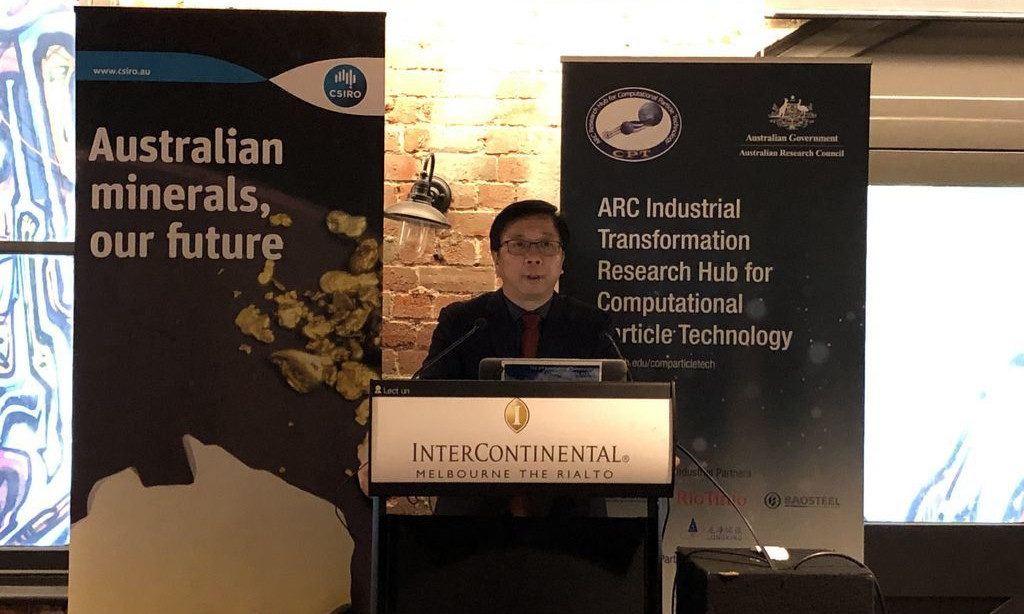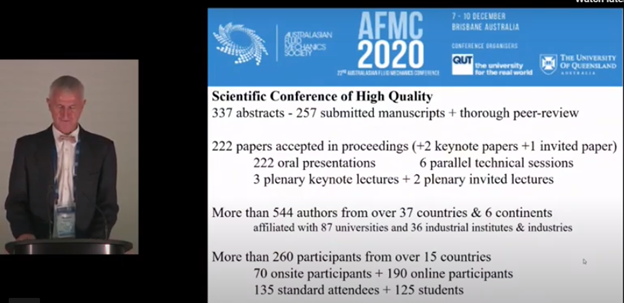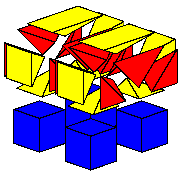CFD simulations involving 3D complex geometry have become the norm, however, this hasn’t lessened the…
CFD/DEM Conference December 2018 – Review
The 13th International Conference on CFD in the Minerals and Process Industries is a conference held biennially in Melbourne in December 2018, and is supported by CSIRO and Monash University. For the second time, the CFD conference was held in conjunction with the Second International Symposium on Computational Particle Technology.

This year’s combined conference had 252 attendees, with approximately half in attendance from overseas and half from Australia. There was 157 papers, 24 keynote lectures, and 6 plenary lectures, running as 3 concurrent sessions. The combined conference had a large proportion of attendees from universities, with academics (134) and students (101) making up 93% of attendees, with industry representing (17 attendees) or 7%. It is a good place to hear and see what CFD and DEM research and application is being conducted internationally.
With so many papers, the schedule is packed and it’s hard to decide which concurrent session to go to, especially as the CFD and DEM conferences were mixed in somewhat randomly. This years sessions had the following topics: Simulation Methods, Granular Dynamics, Fluid Bed Operations, Particle-Fluid Flow & Multiphase Flow, Granular Dynamics, Multiphase and High-Temperature And Complicated Operations.
These were my 3 favourite talks:
- Title: Modelling of Subsea Gas Blowouts, Author: Jan Erik Olsen from SINTEF – this work focused on modelling the flow of gas from a subsea well blowout scenario, and was interesting because of the scales involved (with up to 1000m of sea depth to model) and range of flow rate conditions to consider (depending on the size of the blowout and depth). The author used ANSYS Fluent with a Eularian-Lagranian combined DPM-VOF model, which accounted for dissolution of the bubbles in seawater and rise in sea-surface due to plume rising to the sea-surface. Mass transfer rates of methane bubbles into water were established from column style experiments. The author discussed various validation stages of the spanning several years, including both lab-scale air-water systems, and real shallow-water methane gas releases. A good comparison of CFD with the experimental data results was achieved from both side view and top view, using different measurement techniques.
- Title: Debottlenecking Of Flow In A Hot Strip Mill Walking Beam Furnace, Authors: Habib D. Zughbi and Iain McDonald, from BlueScope Steel. This work focused on increasing heat capacity of the slab, by increasing flow of flue gases through the recuperator. The authors used CFX with a SST k-omega turbulence model. The large furnace had a Venturi nozzle that provided suction potential of flue gases through the furnace. Increasing nozzle diameter, Venturi throat or flowrates had no effect on the ability to increase flow of flue gases through the recuperator. However, lowering the location of the nozzle resulted in a decrease in Venturi exit pressure of 400Pa, and this resulted in improve flow and heat transfer efficiency. The outcome of the modelling a reduction of 1 million dollars per year in energy savings.
- Title: Computational Models for Pyrometallurgical Phase Separation Problems, Authors: Q.G. Reynolds, O.F. Oxtoby, M.W. Erwee, and P.J.A. Bezuidenhou from Mintek and CSIR, South Africa. The authors were focused on pyrometallurgical separation processes, such as separation of molten metal from an immiscible slag phase. The authors modelled the behaviour of droplets with a “droplet multiple marker” – which detects contiguous droplets, use droplet geometry information and calculates if droplets are close enough to coalesce. A subgrid scale model of thin drainage and rupture is also accounted for. OpenFOAM was used to model a test problem, a single droplet of mercury falling into a pool of quiescent silicone oil. A high speed camera was used to provide experimental validation the model, which captured the mercury droplets in free fall, then rupturing on impact with the oil.
Keynote talks I found interesting include:
- Discrete Simulation Of Granular And Particle-Fluid Systems, by Prof. Wei Ge from Chinese Academy of Sciences.
- Modelling of Subsea Gas Blowouts, by Dr. Jan Erik Olsen from SINTEF (see more details above).
- Use Of 3D Printing For DEM Model Validation, by Dr. Karen Hapgood. Dr Hapgood talked about the methods and benefits of 3D printing in allowing reproducible particle structures for crushing testing, to compare to DEM models. The main benefit of this 3D printing was that the physical models produced allows for good repeatability in the crushing tests, which makes validation of DEM much easier.
- Modelling and Optimisation of Reacting Particle Flow: Examples in Ironmaking Industry by Prof. Yansong Shen
- Modeling Of Complex Liquid – Solid Flow Of Swelling Particles by Dr. Ning Yang from Chinese Academy of Sciences
- Single and Two-phase Hydrodynamics, Heat and Mass Transfer in Micro-channels: The Complexities of Laminar Flow by Prof. David Fletcher.


